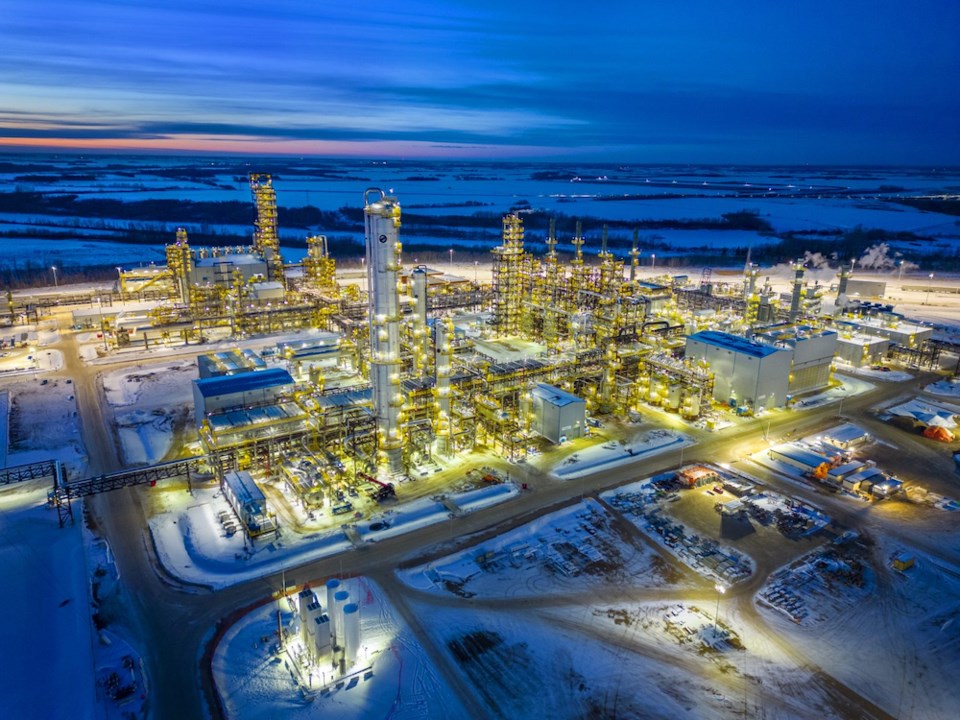More than a decade ago, policymakers and industry in Alberta and B.C. faced the prospect of declining demand for their oil and gas, especially natural gas.
The shale oil revolution gave the U.S. a sudden glut of natural gas, so sales of Western Canadian natural gas to the U.S. began to fall. Also, oil and gas producers in Western Canada faced the reality that, over time, they would need to decarbonize their industries.
Alberta and B.C. chose different paths, both to diversifying their oil and gas markets, and to decarbonizing those industries.
With an abundance of natural gas in northeastern B.C. and access to tidewater, B.C. embraced the idea of exporting natural gas to Asia by liquefying it. Over the past decade, energy majors have invested billions into B.C.’s nascent LNG industry.
Alberta decided to focus on expanding its petrochemical industry. It too has been attracting billions in new investment.
With an abundance of clean electricity, B.C. chose to decarbonize its natural gas and LNG sectors through electrification. Alberta chose carbon capture and storage as a decarbonization strategy for growing a “green” petrochemical industry and developing a new “blue” hydrogen industry.
Alberta has adopted a number of incentives for growing its petrochemicals sector, and government and industry have invested more than $1 billion in the Alberta Carbon Trunk Line. This unique pipeline moves CO2 captured from the Edmonton industrial heartland 240 kilometres south to Clive, Alberta, where it is used in enhanced oil recovery.
By leveraging its new carbon capture and storage capacity and its existing petrochemical industry, Alberta is now positioned to become a significant blue hydrogen producer. Blue hydrogen is made from natural gas but with the CO2 captured and sequestered.
“You’ve got the combination of the low-cost feedstock, along with the carbon capture and sequestration capability,” said Mark Plamondon, executive director of the Alberta Industrial Heartland Association.
“You now have this one-two punch, where you can produce low-carbon and low-cost products that the world is looking for. On top of that, you’ve got world-class infrastructure, you’ve got workforce, and you’ve got abundance of heavy industrial land.”
Plamondon said there are currently five hydrogen production projects proposed for Alberta.
“The capital investment of each of those would be in the billions,” he said. “It’s a huge opportunity for us.”
Edmonton is already Canada’s largest refining and petrochemical cluster.
Alberta has four ethane-cracking plants that account for 80 per cent of Canada’s ethylene production. Ethylene is a basic feedstock for making chemicals. Alberta also has three fertilizer plants, and Shell Canada has a chemical plant at its Scotford refinery in Edmonton that makes styrene monomer and ethylene glycol.
Alberta’s petrochemicals sector – clustered largely in the Heartland industrial zone around Fort Saskatchewan, northeast of Edmonton – sustains 30,000 direct and indirect jobs.
In 2020, the Government of Alberta launched the Alberta Petrochemicals Incentive Program (APIP), which provides a 12 per grant on capital investments over $50 million. As of February, the Government of Alberta has received applications representing $39 billion of potential investment, according to Alberta’s Ministry of Energy and Minerals.
To date, three major projects totally $14.6 billion in capital investment have received $2.4 billion in APIP funding:
- $1.8 billion for the $11.5 billion expansion of a Dow Inc. petrochemical plant in Edmonton – the Path2Zero project;
- $408 million for the $4.3 billion Heartland Polymers complex – a propane dehydration and polypropylene plant built by Inter Pipeline Ltd.; and
- $161 million for Air Products’ $1.6 billion hydrogen energy complex.
The Heartland Polymers complex converts “cheap, locally sourced propane feedstock into high value polypropylene,” Inter Pipeline’s CEO of petrochemicals Todd Karan told the Western Investor.
“Alberta emerged as the perfect location for this endeavor due to our skilled workforce, abundant natural resources, and the supportive environment fostered by the Alberta government, which encourages innovation. This support was instrumental in making our project financially competitive with similar ventures on the U.S. Gulf Coast.”
The Alberta government aims to grow its petrochemical sector by more than $30 billion by 2030, which it estimates would create more than 90,000 construction and operational jobs.



